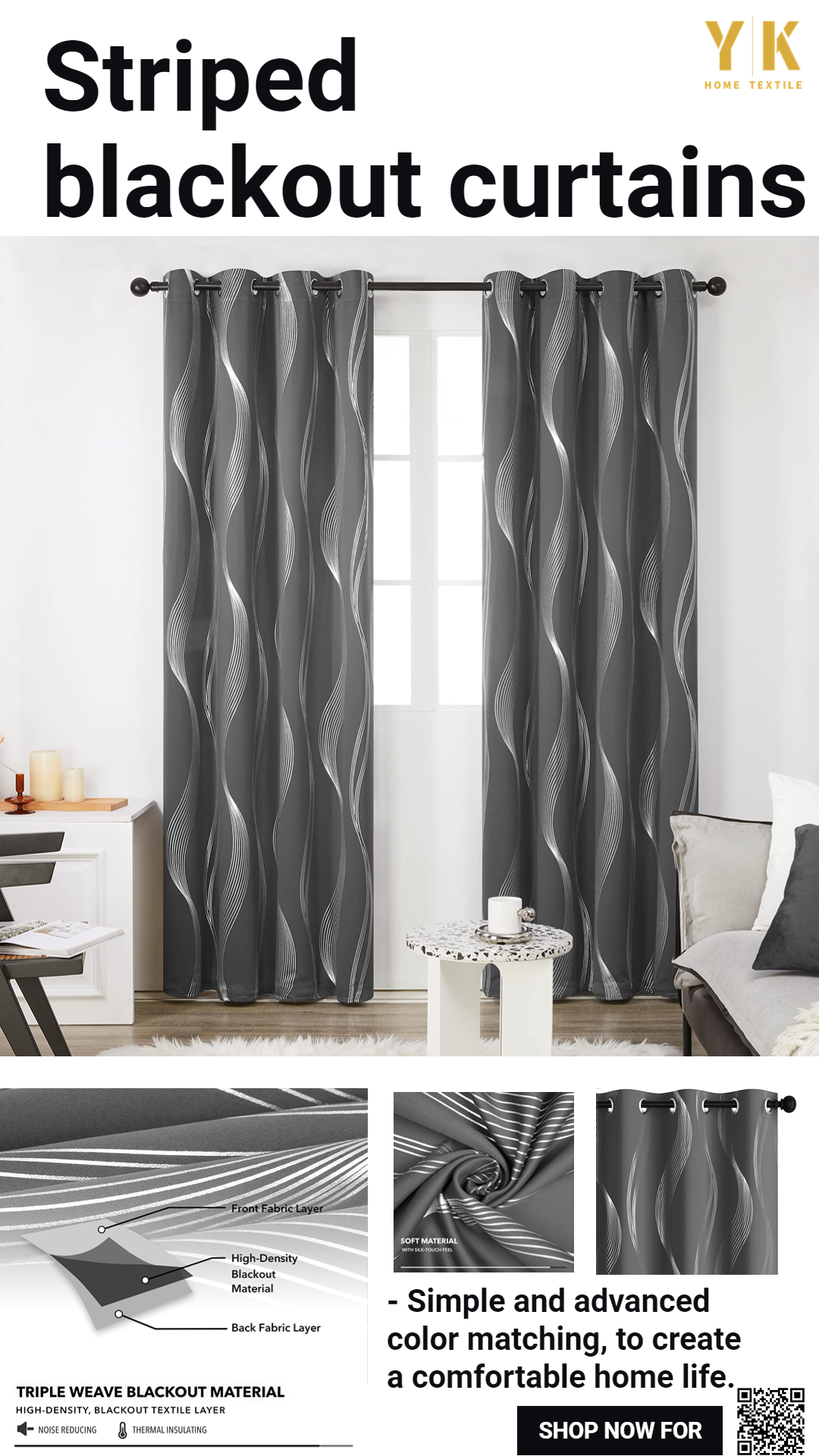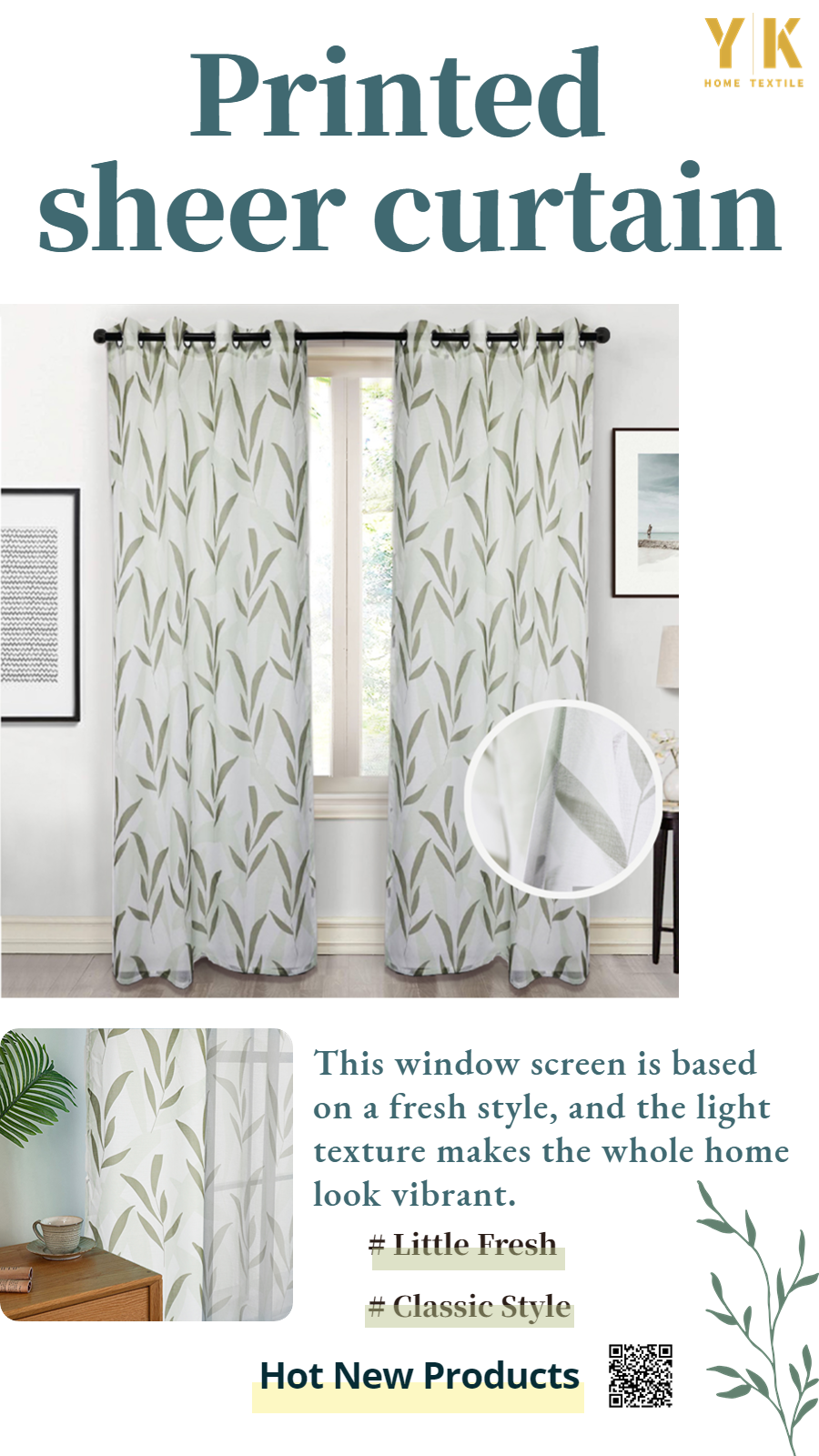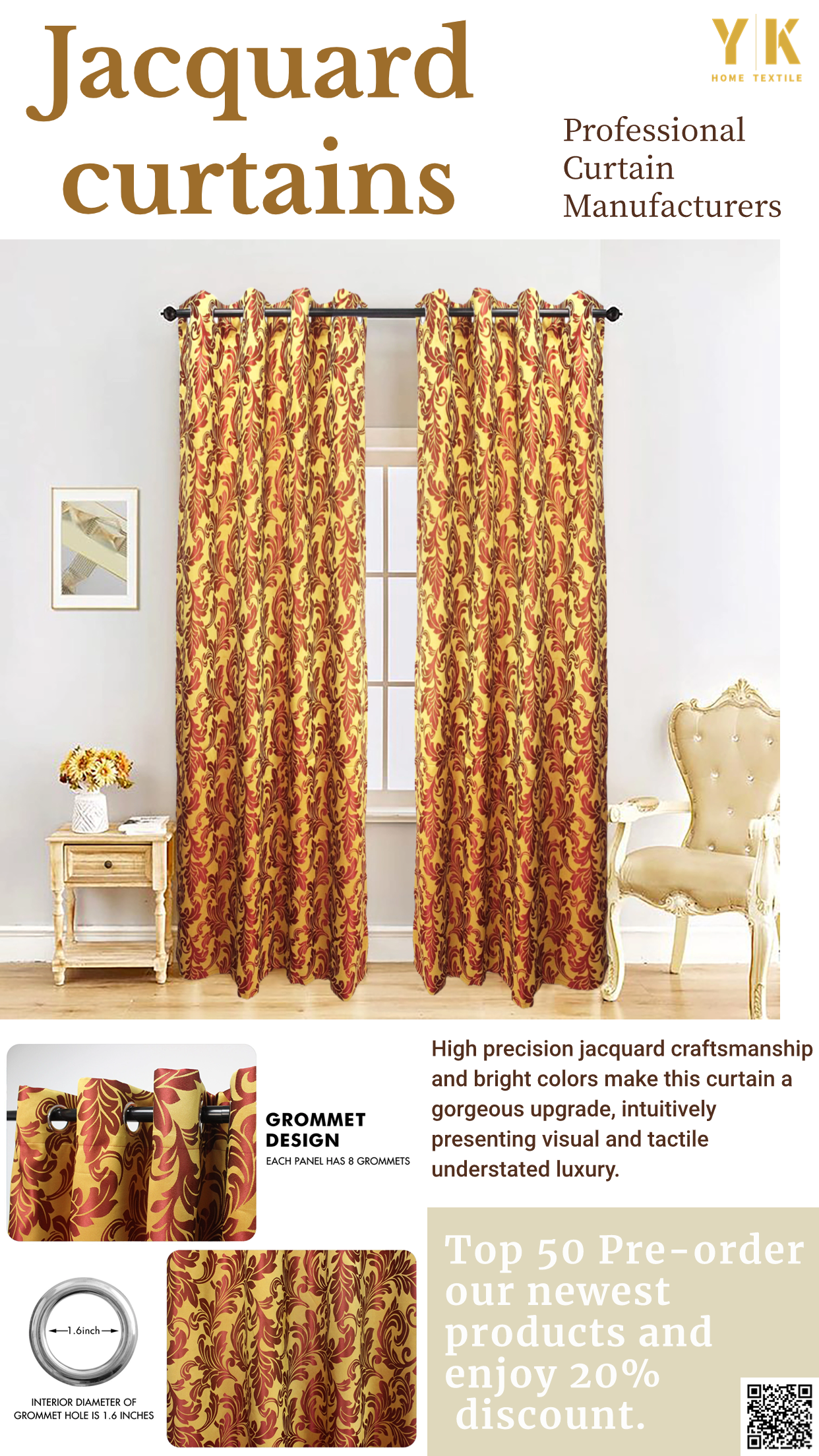Cotton: Cotton is a common and affordable fabric material for curtains. It is soft, comfortable, and has good breathability. Cotton curtains are suitable for creating a relaxed and natural ambiance.
Linen: Linen is a natural fiber material made from flax. It has a rough texture and unique grain, providing a simple and organic feel to a room. Linen curtains are commonly found in country-style, natural-style, or rustic-themed rooms.
Silk: Silk is a luxurious curtain fabric material known for its smooth, soft, and elegant appearance. Silk curtains are often used in formal living rooms, dining rooms, or bedrooms to create a sophisticated and lavish atmosphere.
Velvet: Velvet curtains have a soft, plush texture that adds warmth and comfort to a room. They are particularly suitable for winter or colder climates, offering a cozy ambiance and some insulation properties.
Knitted fabrics: Knitted curtains have stretchability and a soft feel. They are suitable for modern or casual-style rooms, providing a lightweight, privacy, and comfortable atmosphere.
Apart from the mentioned fabrics, there are many other curtain fabric options available, such as polyester, nylon, acrylic, etc. The choice of the best fabric depends on personal preferences, room style, budget, and functional requirements like light control and privacy. It is recommended to physically touch and feel different fabric materials before purchasing curtains to ensure they align with your needs and room décor.
antic atmosphere.

When it comes to choosing the best fabric material for curtains, it depends on your specific needs, style preferences, and budget. Here are some common curtain fabric materials and their characteristics:
Cotton: Cotton is a common and affordable fabric material for curtains. It is soft, comfortable, and has good breathability. Cotton curtains are suitable for creating a relaxed and natural ambiance.
Linen: Linen is a natural fiber material made from flax. It has a rough texture and unique grain, providing a simple and organic feel to a room. Linen curtains are commonly found in country-style, natural-style, or rustic-themed rooms.
Silk: Silk is a luxurious curtain fabric material known for its smooth, soft, and elegant appearance. Silk curtains are often used in formal living rooms, dining rooms, or bedrooms to create a sophisticated and lavish atmosphere.
Velvet: Velvet curtains have a soft, plush texture that adds warmth and comfort to a room. They are particularly suitable for winter or colder climates, offering a cozy ambiance and some insulation properties.
Knitted fabrics: Knitted curtains have stretchability and a soft feel. They are suitable for modern or casual-style rooms, providing a lightweight, privacy, and comfortable atmosphere.
Apart from the mentioned fabrics, there are many other curtain fabric options available, such as polyester, nylon, acrylic, etc. The choice of the best fabric depends on personal preferences, room style, budget, and functional requirements like light control and privacy. It is recommended to physically touch and feel different fabric materials before purchasing curtains to ensure they align with your needs and room décor.

Curtains choose high precision or chenille fabric?
The choice between high-density fabric and chenille fabric for curtains depends on your specific preferences and the desired look and feel for your space. Here are some characteristics of each fabric to help you make a decision:
High-Density Fabric:
High-density fabrics, such as high-density polyester or other synthetic materials, are known for their durability and wrinkle resistance.
They often have a smooth and sleek appearance, making them suitable for contemporary or formal settings.
High-density fabrics can provide effective light control and privacy, as they tend to have a tighter weave that blocks more light.
These fabrics are relatively easy to clean and maintain, making them suitable for high-traffic areas or households with children or pets.
Chenille Fabric:
Chenille fabric is a plush, soft, and textured fabric that adds a cozy and luxurious feel to a room.
It has a velvety appearance with a subtle sheen and can add depth and warmth to the decor.
Chenille fabric is often used to create a casual and inviting atmosphere, making it suitable for living rooms, bedrooms, or spaces where comfort is a priority.
It provides a certain level of insulation and can help to muffle external noise due to its dense and thick construction.
Chenille fabric may require more careful cleaning and maintenance, as it can attract and hold onto dust and pet hair more easily than high-density fabrics.
Ultimately, the choice between high-density fabric and chenille fabric depends on the desired aesthetic, the level of durability and ease of maintenance you prefer, as well as the overall style and ambiance you want to create in your space. It can be helpful to consider these factors along with your personal preferences and the specific requirements of the room before making a decision.



 English
English German
German French
French Russian
Russian Spanish
Spanish Japanese
Japanese Korean
Korean Portuguese
Portuguese Ukrainian
Ukrainian Arabic
Arabic Italian
Italian



